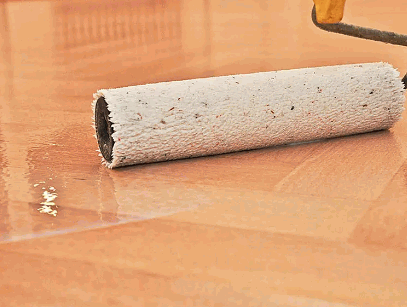Are you looking to upgrade your plywood floors with a durable and stylish option? Epoxy flooring may be the solution for you. With its strength and versatility, epoxy flooring is becoming increasingly popular among homeowners. But before you make the switch, let's explore if epoxy flooring can be applied over plywood and how it can benefit you.
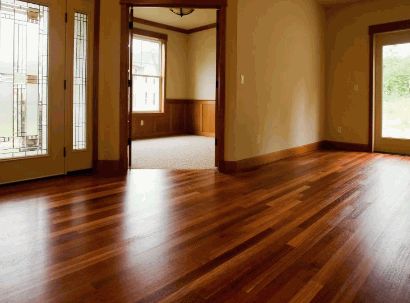
What Is Epoxy Flooring?
Epoxy flooring is a highly durable and versatile option for flooring, commonly utilized in commercial and industrial settings. This type of flooring is created by combining epoxy resins with a hardener, resulting in a strong and resistant surface. While it can be applied over various substrates, it is not recommended to use epoxy flooring directly on plywood. This is because plywood is a porous material that can expand and contract, leading to potential cracking and peeling of the epoxy. To ensure a successful application, it is important to properly prepare the plywood surface by using a layer of primer or a self-leveling compound.
Pro-tip: It is always wise to consult with a professional contractor to determine the suitability of your surface before applying epoxy flooring.
Can Epoxy Flooring Be Applied Over Plywood?
Yes, it is possible to apply epoxy flooring over plywood, but it is important to properly prepare the surface for a successful installation. The plywood must be clean, dry, and free from any contaminants or imperfections. To improve adhesion, it is recommended to sand the plywood to create a rough surface. Additionally, a primer specifically designed for use on plywood should be applied to promote bonding between the plywood and the epoxy coating. By following these steps, you can ensure that the epoxy flooring will adhere properly and provide a durable and long-lasting finish.
Dig Deeper: How To Epoxy Floor In House
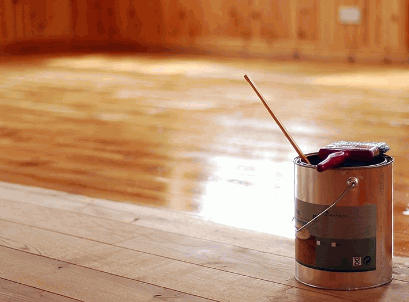
What Are The Requirements For Installing Epoxy Flooring Over Plywood?
In order to successfully install epoxy flooring over plywood, there are certain requirements that must be met. These include:
- Surface preparation: The plywood must be thoroughly cleaned, dried, and free from any dust, dirt, or contaminants.
- Moisture barrier: To prevent moisture damage, a moisture barrier such as a sealer or epoxy primer must be applied.
- Priming: A primer specifically designed for plywood should be applied to improve adhesion between the plywood and epoxy coating.
- Filling and leveling: Prior to applying the epoxy coating, any cracks, holes, or imperfections on the plywood surface must be filled and leveled.
- Compatibility: It is important to choose an epoxy product that is suitable for use on plywood and to follow the manufacturer's instructions for application.
By meeting these requirements, you can ensure strong and long-lasting epoxy flooring over plywood.
What Are The Benefits Of Epoxy Flooring Over Plywood?
If you're considering upgrading your flooring, epoxy flooring over plywood is a popular option that offers many benefits. In this section, we will explore the advantages of choosing epoxy flooring over plywood. From its durability and resistance to stains and chemicals to its easy maintenance and ability to enhance the overall look of your floor, we will cover all the reasons why this type of flooring is a smart choice for any space.
1. Durable And Long-lasting
Epoxy flooring is renowned for its durability and long-lasting nature, making it a popular choice for a variety of applications. To ensure a successful installation, follow these steps:
- Prepare the plywood surface by thoroughly cleaning it to remove any dirt or debris.
- Sand the plywood to create a rough surface that enhances adhesion.
- Apply a primer specifically designed for use with epoxy flooring.
- Mix the epoxy resin and hardener according to the manufacturer's instructions.
- Apply the epoxy coating evenly and smoothly using a roller or brush.
- Allow the coating to cure completely, typically for 24 to 48 hours.
- For extra protection, apply a topcoat to enhance durability and longevity.
Pro-tip: To ensure the best results, make sure to follow the manufacturer's instructions and allow sufficient curing time before subjecting the floor to heavy use or foot traffic.
2. Resistant To Stains And Chemicals
Epoxy flooring is known for its high resistance to stains and chemicals, making it a popular choice for various applications. Its seamless and non-porous surface acts as a barrier, preventing substances like oil, grease, and chemicals from penetrating and staining the floor. This not only makes it easier to clean and maintain but also saves time and effort.
Whether in residential, commercial, or industrial settings, epoxy flooring provides a durable and long-lasting solution that can withstand heavy foot traffic and frequent exposure to spills or chemicals. It is an ideal choice for garages, warehouses, laboratories, and other spaces where resistance to stains and chemicals is crucial.
3. Easy To Clean And Maintain
Epoxy flooring over plywood is a low-maintenance option that is easy to keep clean, making it a popular choice for both homeowners and businesses.
- Regular Sweeping: Use a broom or dust mop to remove loose dirt and debris from the surface.
- Mild Cleaning Solution: Mix a mild soap or detergent with warm water and mop the floor to remove stains or spills.
- Spot Cleaning: For stubborn stains, gently scrub the affected area with a soft-bristle brush or sponge.
- Avoid Harsh Chemicals: To prevent damage to the epoxy coating, it's best to use mild cleaning solutions instead of harsh chemicals.
- Preventive Maintenance: Placing mats or rugs at entryways can help minimize the amount of dirt and grit that gets tracked onto the floor.
4. Enhances The Aesthetic Appeal Of The Floor
Installing epoxy flooring over plywood can greatly enhance the aesthetic appeal of the floor. Here are some steps to achieve this:
- Prepare the plywood surface by cleaning it thoroughly.
- Sand the surface to create a smooth and even base.
- Apply a primer to promote adhesion between the plywood and epoxy.
- Mix the epoxy resin and hardener according to the manufacturer's instructions.
- Apply the epoxy coating evenly using a roller or brush.
- Allow the coating to cure for the recommended time.
- For extra protection and a glossy finish, apply a top coat over the cured epoxy layer.
Consider adding decorative flakes or colors to further enhance the aesthetic appeal. Remember to follow safety guidelines and work in a well-ventilated area. Enjoy your beautifully enhanced epoxy flooring over plywood!
What Are The Potential Risks Of Epoxy Flooring Over Plywood?
While epoxy flooring can be a durable and attractive option for many surfaces, using it over plywood can come with some potential risks. In this section, we will discuss the possible drawbacks of using epoxy flooring over plywood, such as moisture damage, bonding issues, and an uneven surface. By understanding these risks, you can make an informed decision about whether epoxy flooring is the right choice for your plywood surface.
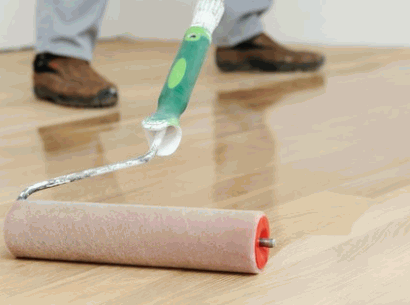
1. Moisture Damage
Moisture damage is a potential risk when applying epoxy flooring over plywood. To minimize this risk, it is important to follow certain steps during the preparation and installation process:
- Thoroughly clean the plywood surface to remove any dirt, dust, or debris that may hinder adhesion.
- Create a rough texture on the surface by sanding it, which will help the epoxy to adhere better.
- Apply a primer specifically designed for plywood to create a barrier against moisture.
By following these steps, the chances of moisture damage can be reduced and a successful epoxy flooring installation can be ensured. Additionally, proper ventilation and humidity control in the area should be maintained to prevent any future moisture-related issues.
2. Bonding Issues
Bonding issues can occur when applying epoxy flooring over plywood. To ensure a successful bond, it is important to follow these steps:
- Prepare the plywood surface by sanding it to remove any existing finish or rough spots.
- Clean the surface thoroughly to eliminate any dust, dirt, or debris that may interfere with adhesion.
- Apply a primer specifically designed for plywood to promote better bonding.
- Mix the epoxy resin and hardener according to the manufacturer's instructions.
- Apply the epoxy coating over the plywood surface using a roller or brush.
- Allow the coating to fully cure before exposing it to foot traffic or heavy objects.
- For added protection, consider applying a topcoat over the cured epoxy coating.
By following these steps, you can prevent bonding issues and ensure a strong bond between the epoxy flooring and plywood surface.
3. Uneven Surface
Dealing with an uneven surface when installing epoxy flooring over plywood requires proper preparation and leveling techniques.
- Identify the areas of unevenness by visually inspecting and running your hand across the surface.
- Use a leveling compound to fill in the low spots and create a smooth surface. Follow the manufacturer's instructions for mixing and application.
- If the surface is significantly uneven, sand down the high spots using a belt sander or floor grinder.
- After leveling, thoroughly clean the surface to remove any dust or debris.
- Apply a primer to the plywood to improve adhesion and create a more even appearance.
- Once the primer has dried, proceed with applying the epoxy coating according to the manufacturer's instructions.
- Allow the epoxy coating to cure completely before adding any additional topcoat or applying heavy traffic on the surface.
How To Prepare Plywood For Epoxy Flooring?
Before applying epoxy flooring on plywood, it is crucial to properly prepare the surface to ensure a long-lasting and flawless finish. In this section, we will discuss the necessary steps to prepare plywood for epoxy flooring. From thoroughly cleaning the surface to applying a primer, each step is essential in creating a smooth and durable base for the epoxy. So, let's dive into the preparation process and learn how to properly prepare plywood for epoxy flooring.
1. Clean The Surface Thoroughly
When preparing plywood for epoxy flooring, it is crucial to clean the surface thoroughly to ensure a proper bond and long-lasting finish.
- Remove any dirt, dust, or debris from the surface using a broom or vacuum cleaner.
- Wash the surface with a mild detergent and warm water to remove any stains or grease.
- Rinse the surface thoroughly with clean water to remove any residue from cleaning products.
- Allow the surface to dry completely before proceeding with the epoxy installation.
Epoxy flooring has been used for decades in industrial settings due to its durability and chemical resistance. Over time, it has gained popularity in residential and commercial spaces for its aesthetic appeal and easy maintenance. Today, epoxy flooring is a popular choice for homeowners and business owners looking for a durable and attractive flooring option.
2. Sand The Surface
To prepare the plywood surface for epoxy flooring, follow these steps:
- Clean the surface thoroughly to remove any dirt, dust, or debris.
- Sand the surface using coarse-grit sandpaper to create a rough texture for better adhesion.
- Remove any sanding residue by vacuuming or wiping the surface clean.
- Apply a primer specifically designed for plywood to seal the surface and enhance adhesion.
3. Apply A Primer
Before applying epoxy flooring over plywood, it is important to properly prepare the surface by applying a primer. This will ensure proper adhesion and durability. Here are the steps to follow:
- Clean the plywood surface thoroughly to remove any dust, dirt, or debris.
- Sand the surface to create a rough texture, allowing the primer to adhere better.
- Apply a primer specifically designed for use with epoxy flooring, such as the "3. Apply a Primer" product. This will create a strong bond between the plywood and the epoxy coating.
By applying a primer, you are creating a solid foundation for the epoxy flooring, enhancing its longevity and performance.
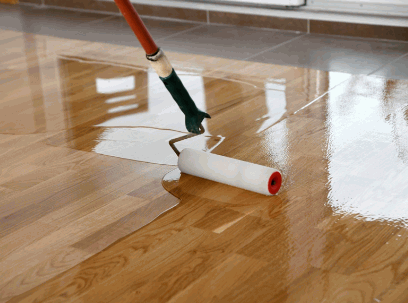
What Are The Steps To Install Epoxy Flooring Over Plywood?
If you're considering installing epoxy flooring over plywood, it's important to know the proper steps to ensure a successful and long-lasting result. In this section, we will discuss the specific steps involved in the installation process. From mixing the epoxy resin and hardener to applying the coating and allowing it to cure to add a topcoat for extra protection - we will cover each step in detail. With this knowledge, you can confidently tackle your epoxy flooring project with ease.
1. Mix The Epoxy Resin And Hardener
Mixing the epoxy resin and hardener is a crucial step in installing epoxy flooring over plywood. Follow these steps for a successful mixing process:
- Gather the epoxy resin and hardener components.
- Read the instructions on the packaging to determine the correct mixing ratio.
- Measure the appropriate amounts of resin and hardener using separate containers.
- Pour the measured resin component into a clean mixing container.
- Add the measured hardener component to the mixing container.
- Stir the resin and hardener together thoroughly for the recommended time, ensuring a consistent mixture.
Remember to mix the epoxy resin and hardener according to the manufacturer's instructions for optimal results. Following these steps will help you achieve a well-blended mixture, ensuring strong and durable epoxy flooring over plywood.
2. Apply The Epoxy Coating
To properly apply the epoxy coating onto plywood for flooring, follow these steps:
- Prepare the surface by thoroughly cleaning it to remove any dirt, dust, or debris.
- Sand the plywood to create a rough texture, which will allow for better adhesion of the epoxy coating.
- Apply a primer to seal the plywood and ensure proper bonding between the epoxy and the surface.
- Mix the epoxy resin and hardener according to the manufacturer's instructions.
- Using a roller or brush, evenly apply the epoxy coating onto the plywood surface.
- Allow the coating to cure for the recommended time, ensuring it has fully hardened.
- For additional protection, consider applying a topcoat to enhance durability and resistance.
Remember to follow safety precautions and work in a well-ventilated area. It is also advisable to consult the manufacturer's guidelines for specific instructions and recommendations.
3. Allow The Coating To Cure
To ensure the success of your epoxy flooring over plywood, it is crucial to follow these essential steps for proper curing:
- After applying the epoxy coating, leave it undisturbed to dry and cure for 24 to 72 hours, depending on the specific product and environmental conditions.
- During the curing process, make sure the area is well-ventilated to allow for proper air circulation.
- Avoid walking or placing any objects on the floor until the coating has fully cured.
- Once the initial curing period is complete, it is recommended to wait an additional 48 to 72 hours before subjecting the floor to heavy traffic or moving furniture back in.
Epoxy flooring has been used since the early 20th century when it was first developed for industrial applications. Its durability and versatility have made it a popular choice for various settings, including residential, commercial, and even artistic spaces. Today, epoxy flooring remains a popular option for its seamless and glossy finish, as well as its ability to withstand heavy use and provide long-lasting protection to the underlying surface.
4. Apply A Topcoat For Extra Protection
To provide additional protection for epoxy flooring over plywood, it is essential to apply a topcoat. Follow these steps to do so:
- Thoroughly clean the surface to remove any dirt or debris.
- Create a rough texture by sanding the surface for better adhesion.
- Seal the plywood and enhance the bonding of the epoxy by applying a primer.
- Mix the epoxy resin and hardener according to the manufacturer's instructions.
- Apply the epoxy coating using a roller or brush.
- Allow the coating to cure for the recommended time.
- For extra protection, apply a topcoat such as clear epoxy or polyurethane coating.
The practice of applying topcoats for extra protection dates back centuries, with ancient civilizations using natural resins and oils to seal and protect various surfaces. As technology advanced, modern topcoat solutions like epoxy and polyurethane were developed to ensure durability and longevity for epoxy flooring over plywood.
